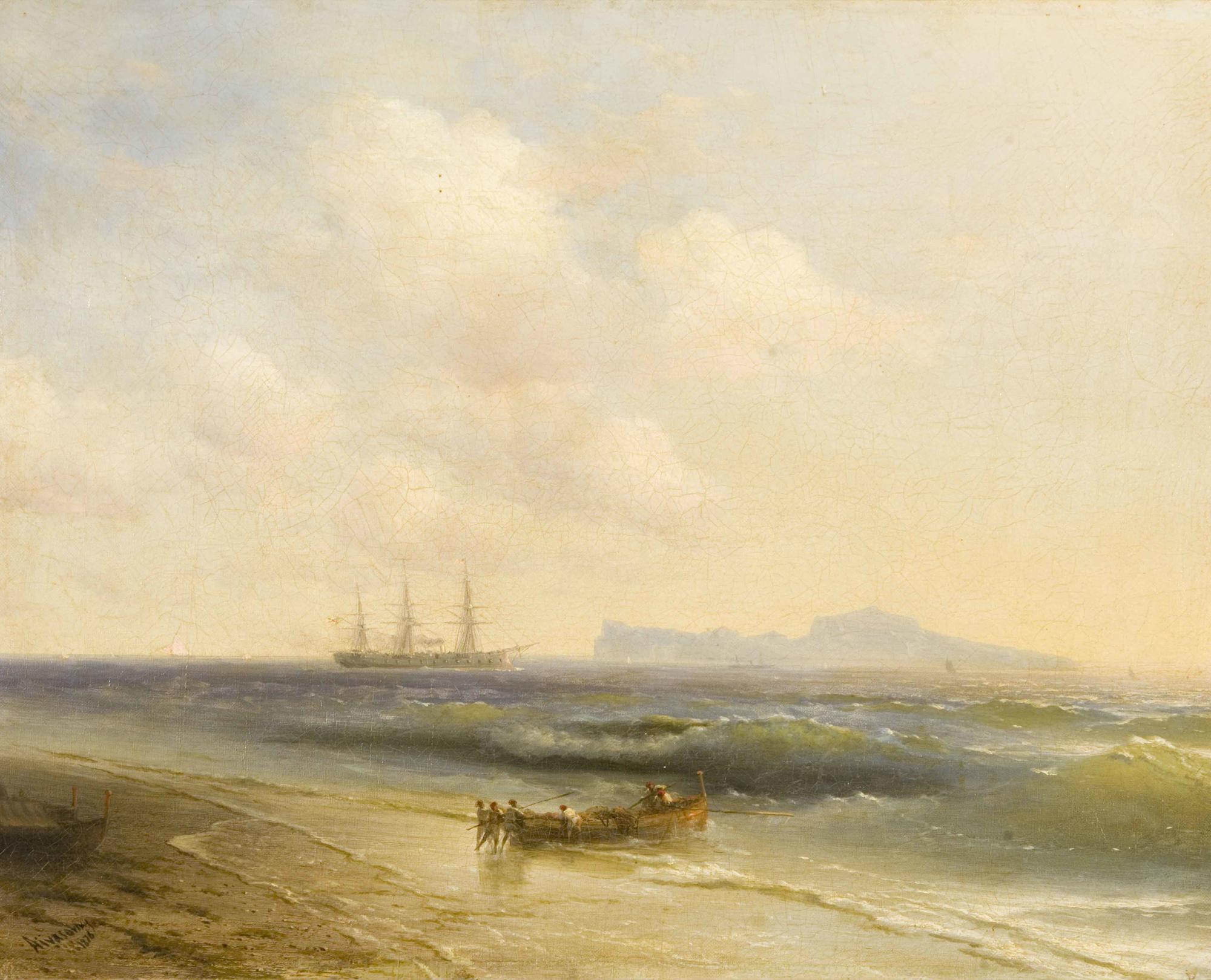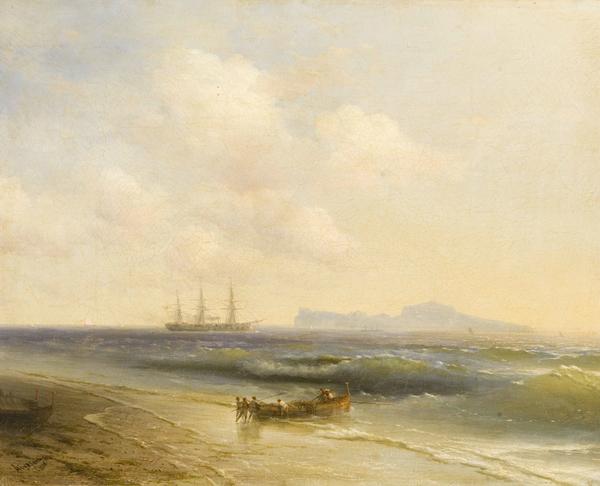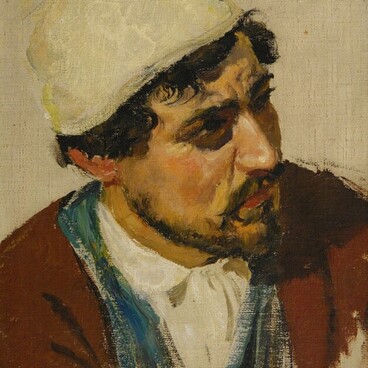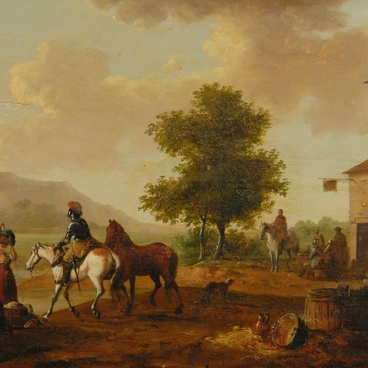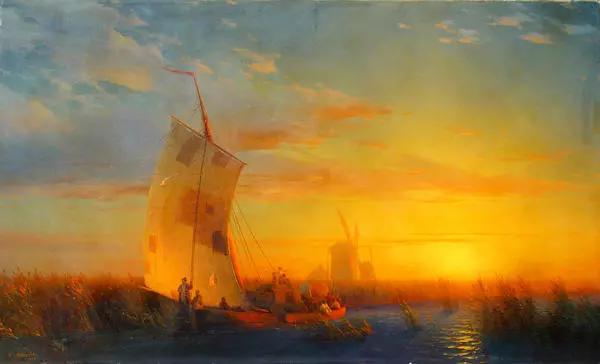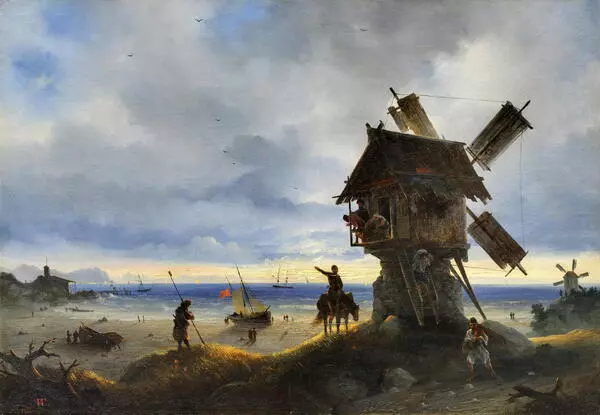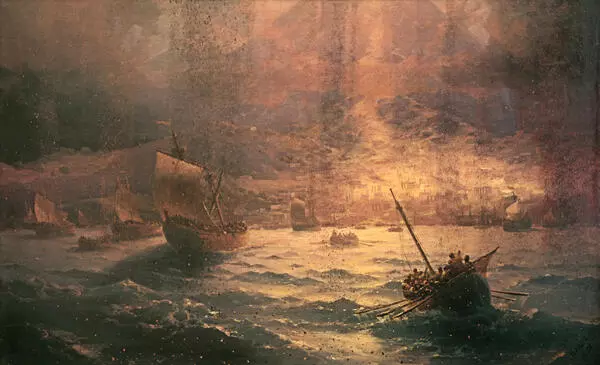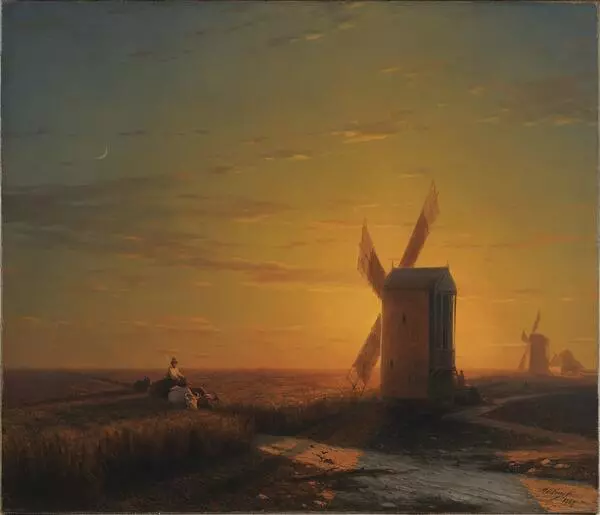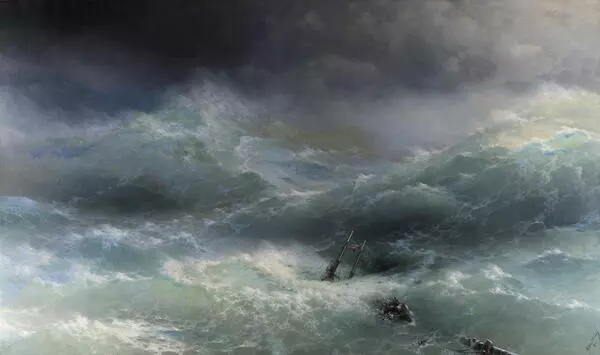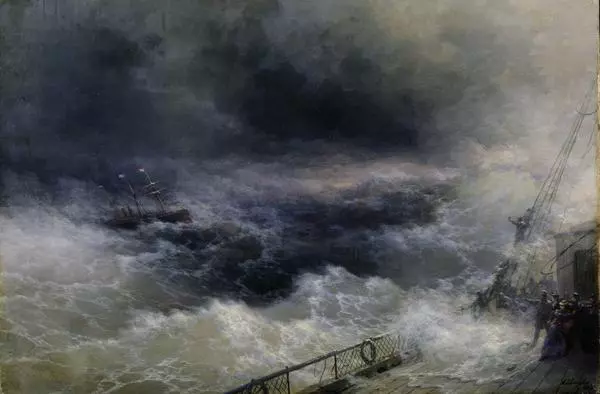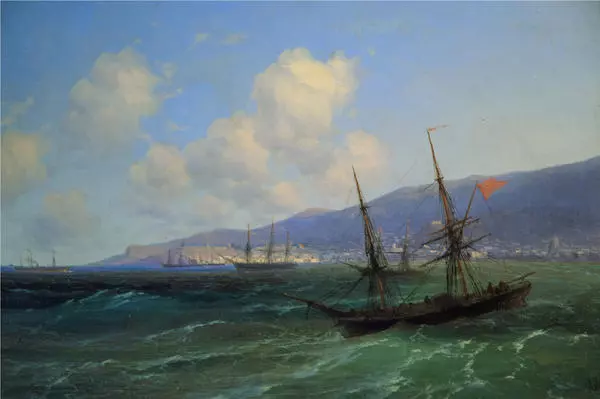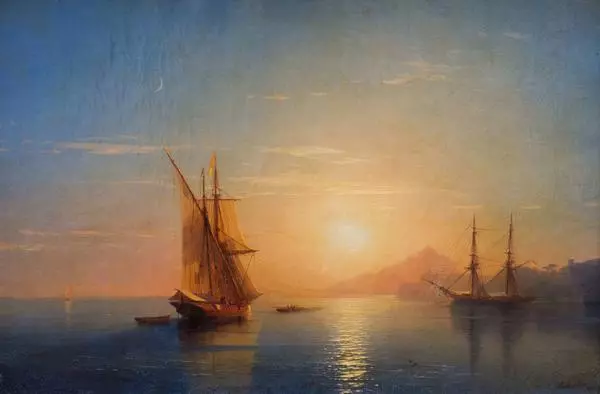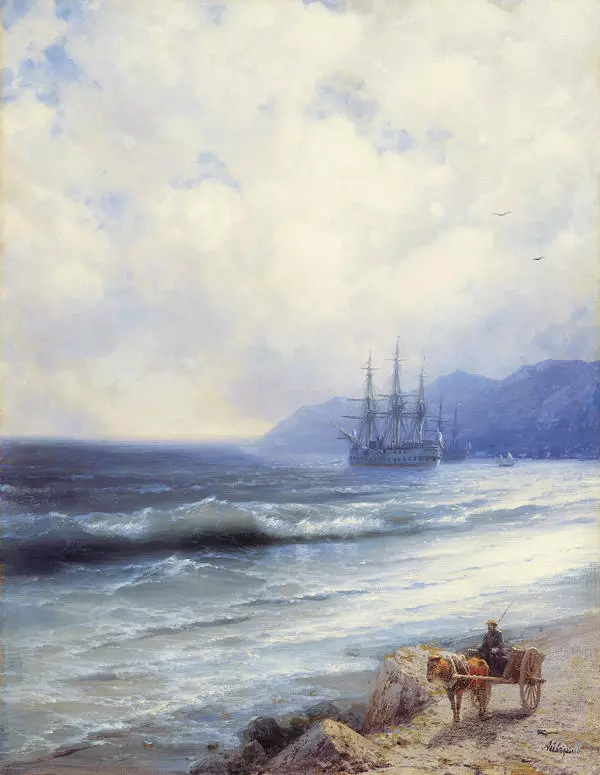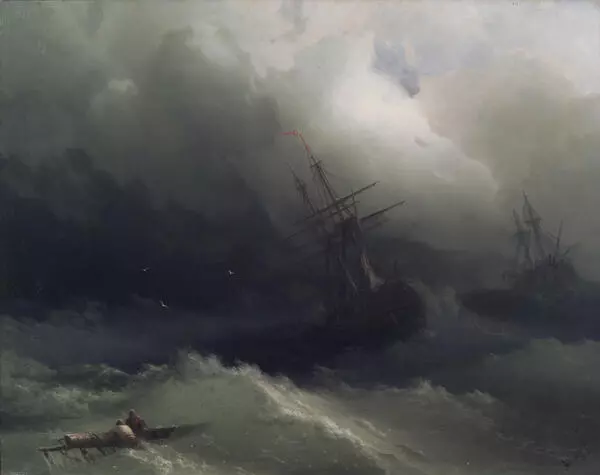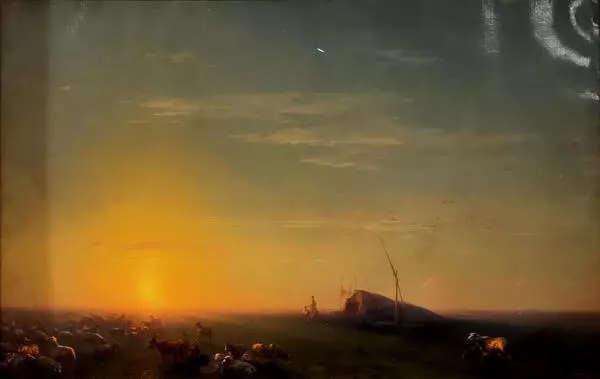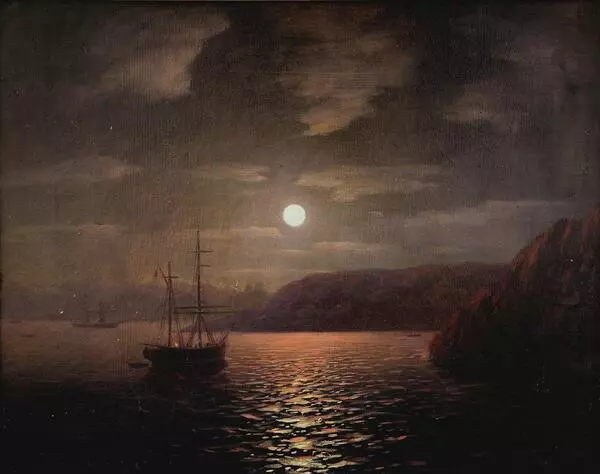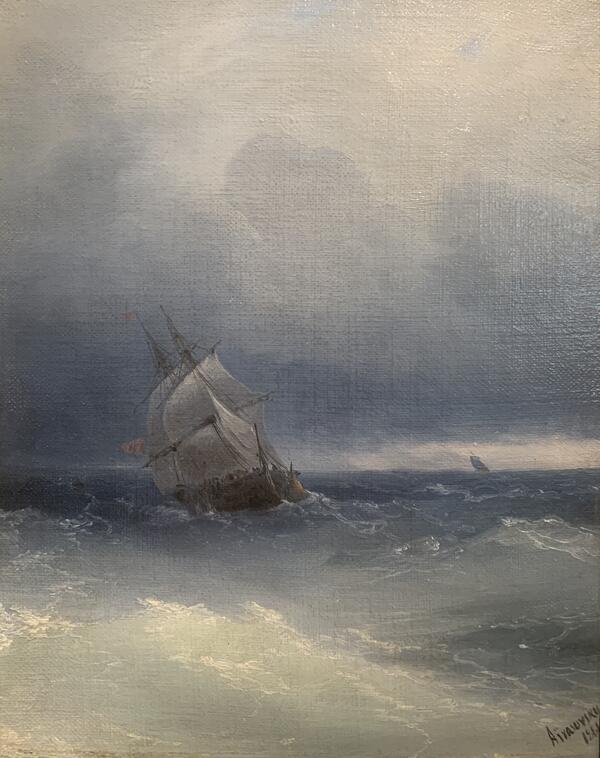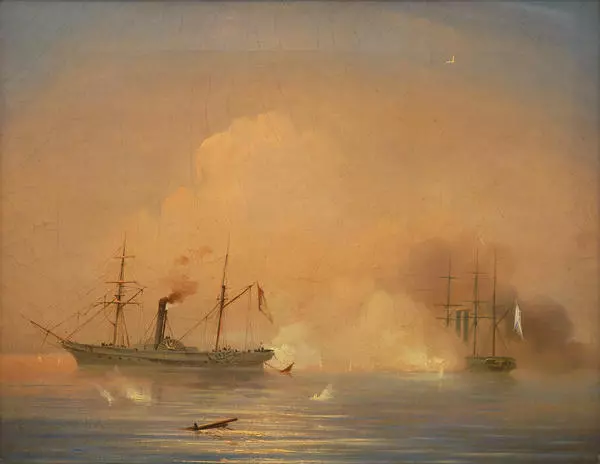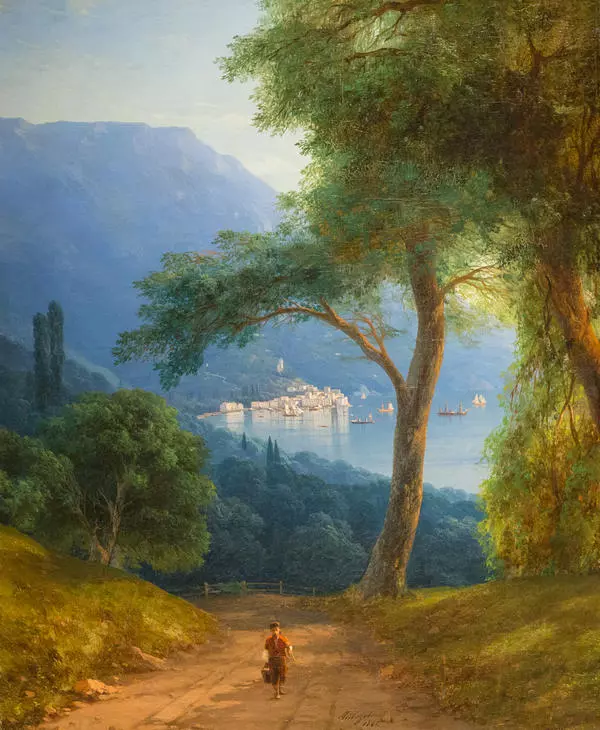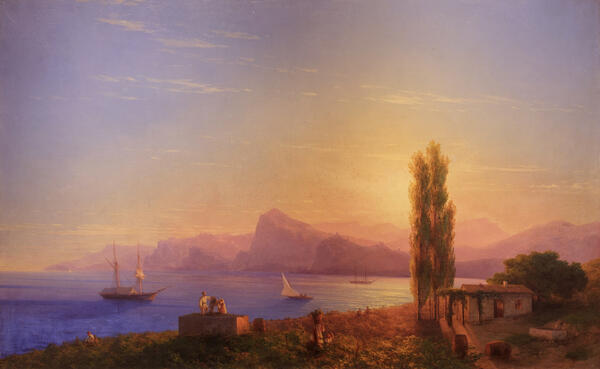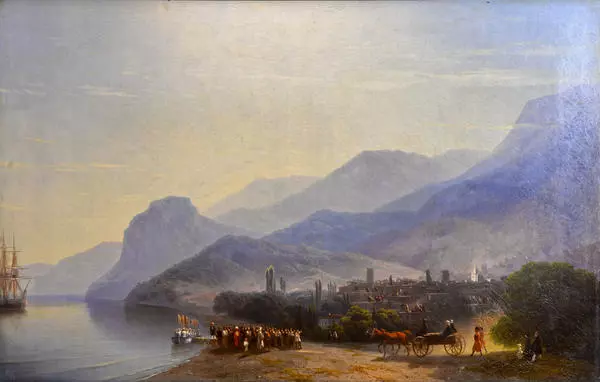The painting ‘The Sea of Capri’ from the collection of the Tarusa Art Gallery of the great landscape painter, seascape and battle painter Ivan Aivazovsky (1817-1900) was created in 1876 and belongs to the artist’s mature period. In his youth he was inspired by the painting of Karl Bryullov, creating colorful canvases of a high level of skill. His favorite motives are various versions of the image of the sea. Many of the landscapes are the fruits of his impressions from numerous travels. After studying at the Academy of Arts, he made a retirement trip to Italy, later visited Germany, France, Spain, Holland, Turkey, and Greece, and traveled extensively throughout Russia. Creating sketches in the course of his observations, he subsequently reflected in his painting its vital energy and strength. He was able to transmit moon or sunlight in calm water or a whirlwind of waves.
The emotional background of the landscape reflected the color he chose for each painting. The artist preferred a restrained color scheme, but he managed to convey the richness of the colors of nature. Over the years, Aivazovsky began to strive for coloristic unity, using gradations of one color.
This painting depicts the Mediterranean coast of Italy during the day. To convey the picturesque nature of the island of Capri, the artist uses a restrained color scheme. Light shades of yellow depict sunlight in the clouds, brownish - wet sand from the surf of the waves, pale blue was used for the sky, gray-blue and several shades of green for the sea.
The unity of man with nature is reflected by human figures at a fishing boat and the silhouette of a ship in the distance. The artist contrasts with the scale of nature and man, their relationship, the majesty of the first in her ability to burst into the elements. This work embodies all the basic techniques of the traditional Western European romantic landscape, as well as Aivazovsky’s appeal to the art of Russian realism, which will manifest itself in his later period.
The emotional background of the landscape reflected the color he chose for each painting. The artist preferred a restrained color scheme, but he managed to convey the richness of the colors of nature. Over the years, Aivazovsky began to strive for coloristic unity, using gradations of one color.
This painting depicts the Mediterranean coast of Italy during the day. To convey the picturesque nature of the island of Capri, the artist uses a restrained color scheme. Light shades of yellow depict sunlight in the clouds, brownish - wet sand from the surf of the waves, pale blue was used for the sky, gray-blue and several shades of green for the sea.
The unity of man with nature is reflected by human figures at a fishing boat and the silhouette of a ship in the distance. The artist contrasts with the scale of nature and man, their relationship, the majesty of the first in her ability to burst into the elements. This work embodies all the basic techniques of the traditional Western European romantic landscape, as well as Aivazovsky’s appeal to the art of Russian realism, which will manifest itself in his later period.
